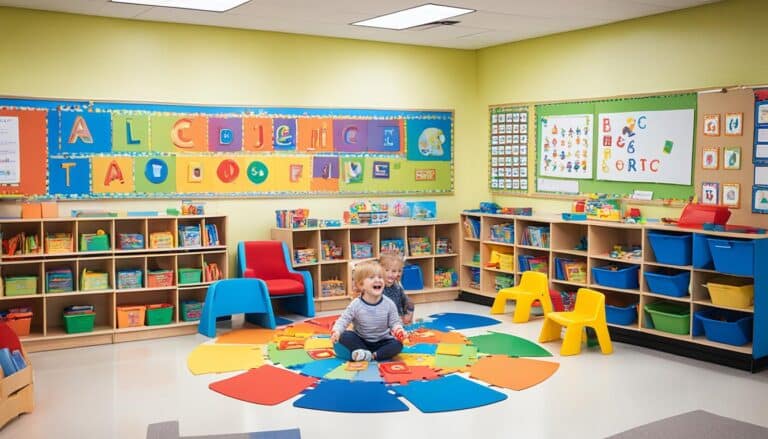Earning a Childhood Education Degree: Pathways and Potential
As an aspiring childhood educator, I understand the importance of a solid educational foundation in shaping young minds and making a positive impact on future generations. Pursuing a childhood education degree opens up numerous pathways for individuals like me, providing the knowledge and skills necessary to excel in this rewarding field. By embarking on this educational journey, I can explore a wide range of opportunities and discover my true potential as an educator.
Throughout the buyer’s journey of pursuing a childhood education degree, there are key touchpoints and stages that guide students towards making an informed decision. It starts with awareness, where potential students realize their passion for childhood education and recognize the potential to make a difference. Following this is the consideration stage, where students meticulously research and evaluate various programs, courses, and institutions to find the best fit for their goals and aspirations. Eventually, in the decision stage, students make their choice and take the leap towards enrolling in a specific program that aligns with their vision.
Optimizing these touchpoints in the buyer’s journey is crucial for businesses and institutions to effectively meet the needs and expectations of aspiring childhood educators. Websites play a pivotal role as the first point of contact, providing comprehensive information about degree programs, showcasing the institution’s offerings, and incorporating social proof through testimonials and case studies. Creating a positive user experience, intuitive navigation, and fast loading times are also essential to ensure potential students feel engaged and supported.
With the right strategies and support, navigating the pathway to a childhood education degree becomes an exciting and fulfilling experience. As I embark on this journey, I look forward to exploring the countless opportunities that lie ahead and discovering my true potential as a childhood educator.
Key Takeaways:
- Pursuing a childhood education degree offers pathways for shaping young minds and making a positive impact.
- The buyer’s journey consists of stages: awareness, consideration, and decision.
- Optimizing touchpoints like websites can enhance the buyer’s experience and facilitate informed decision-making.
- Comprehensive information, social proof, and user-friendly design are vital on websites.
- Navigating the pathway to a childhood education degree unlocks exciting opportunities for personal and professional growth.
Mapping Out the Journey to a Childhood Education Degree
When embarking on the path to earning a childhood education degree, it is essential to understand the buyer’s journey that potential students go through. This journey consists of three distinct stages: awareness, consideration, and decision.
Awareness Stage
In the awareness stage, individuals realize their interest in childhood education and recognize the impact they can have on shaping young minds. They may be inspired by personal experiences or a genuine passion for working with children. During this stage, potential students seek information about the field, exploring the different career opportunities available and the potential for making a meaningful difference.
Consideration Stage
As prospective students progress to the consideration stage, they begin researching and evaluating the various options for pursuing a childhood education degree. This includes exploring different programs, courses, and institutions that offer relevant education and training. They compare curriculums, look at faculty profiles, and consider factors such as location, reputation, and accreditation.
Decision Stage
Finally, in the decision stage, students make their choice and move forward with enrolling in a specific childhood education program. By this point, they have weighed their options, considered their career goals, and assessed the resources and support available to them. The decision stage marks the culmination of their journey, as they commit to acquiring the necessary knowledge and skills to become effective childhood educators.
| Stage | Key Characteristics | Objectives |
|---|---|---|
| Awareness | – Identifying interest in childhood education – Recognizing the impact they can make – Seeking information on career opportunities | – Understand the field and its potential – Determine if childhood education aligns with their goals – Explore the possibilities for making a difference |
| Consideration | – Researching different programs and institutions – Comparing curriculums and faculty profiles – Assessing factors like location and reputation | – Evaluate available options – Find the best-fit program and institution – Ensure a quality education and supportive environment |
| Decision | – Making a final choice and enrolling – Assessing available resources and support – Committing to acquiring knowledge and skills | – Confirm program enrollment – Plan for success in childhood education – Begin the journey towards becoming an educator |
Optimizing Touchpoints in the Buyer Journey
Throughout the buyer’s journey to obtaining a childhood education degree, there are several touchpoints that play a crucial role in guiding potential students toward their decision. These touchpoints include websites, social media platforms, emails, advertisements, and physical stores. However, websites often serve as the initial point of contact, making their optimization essential for businesses.
When designing a website, it is crucial to prioritize the user experience (UX) to create a positive and engaging interaction. In the context of childhood education degrees, websites should showcase the institution’s offerings and provide comprehensive information about the degree program. This includes highlighting the curriculum, faculty, and any unique features or benefits that set the program apart. By doing so, businesses can nurture the interest of potential students and make a lasting impression.
To enhance credibility and trust, incorporating social proof through testimonials and case studies can be highly effective. Sharing success stories and showcasing the impact of the childhood education degree can help potential students envision their own future in the field. By highlighting the achievements and experiences of past graduates, businesses can instill confidence and inspire prospects to take the next step.
Furthermore, optimizing the user experience involves ensuring intuitive navigation and fast loading times. Clear and accessible navigation menus, informative headers, and well-organized content make it easier for visitors to find the information they need. In today’s fast-paced digital landscape, fast loading times are also essential to prevent potential students from getting frustrated and leaving the website.
FAQ
What is a childhood education degree?
A childhood education degree is a qualification that prepares individuals for a career in educating and shaping young minds. It equips them with the knowledge and skills necessary to work with children in various educational settings.
What are the pathways available with a childhood education degree?
A childhood education degree offers numerous pathways and career opportunities. Graduates can become preschool teachers, elementary school teachers, teacher assistants, child care directors, curriculum specialists, or educational consultants, among other roles.
How can pursuing a childhood education degree make an impact?
By pursuing a childhood education degree, individuals have the opportunity to make a significant impact on the lives of young children. They play a crucial role in their development, helping them learn essential skills and concepts, fostering their social-emotional growth, and igniting a love for learning.
What is the buyer’s journey in pursuing a childhood education degree?
The buyer’s journey in pursuing a childhood education degree consists of three stages: awareness, consideration, and decision. During the awareness stage, potential students become interested in childhood education. In the consideration stage, they research and evaluate programs and institutions. In the decision stage, they choose and enroll in a specific program.
What emotions and needs do students experience in each stage of the buyer’s journey?
In the awareness stage, students experience excitement, curiosity, and a desire to make a difference. In the consideration stage, they feel the need for comprehensive information, program suitability, and financial viability. In the decision stage, they seek reassurance, confidence, and support in finalizing their choice.
What are the touchpoints in the buyer’s journey to a childhood education degree?
The touchpoints include websites, social media platforms, emails, advertisements, and physical stores. These touchpoints allow potential students to explore different options, gather information, make comparisons, and eventually make a decision on the right childhood education degree.
How can websites be optimized as touchpoints in the buyer’s journey?
Websites should provide a positive user experience by showcasing the institution’s offerings, offering comprehensive information about the degree program, and incorporating elements of social proof through testimonials and case studies. Optimization should also include intuitive navigation and fast loading times.
Why is social proof important in the buyer’s journey to a childhood education degree?
Social proof, in the form of testimonials and case studies, helps potential students gain confidence and trust in the institution and program. It provides real-life examples of past students’ experiences and success stories, influencing their decision-making process positively.
How can businesses effectively engage with potential students in their buyer journey?
Businesses can engage with potential students by providing valuable and relevant content through various touchpoints such as websites, social media platforms, and emails. Personalized communication, prompt responses to inquiries, and tailored support can significantly enhance the overall experience and guide students through their educational journey.






